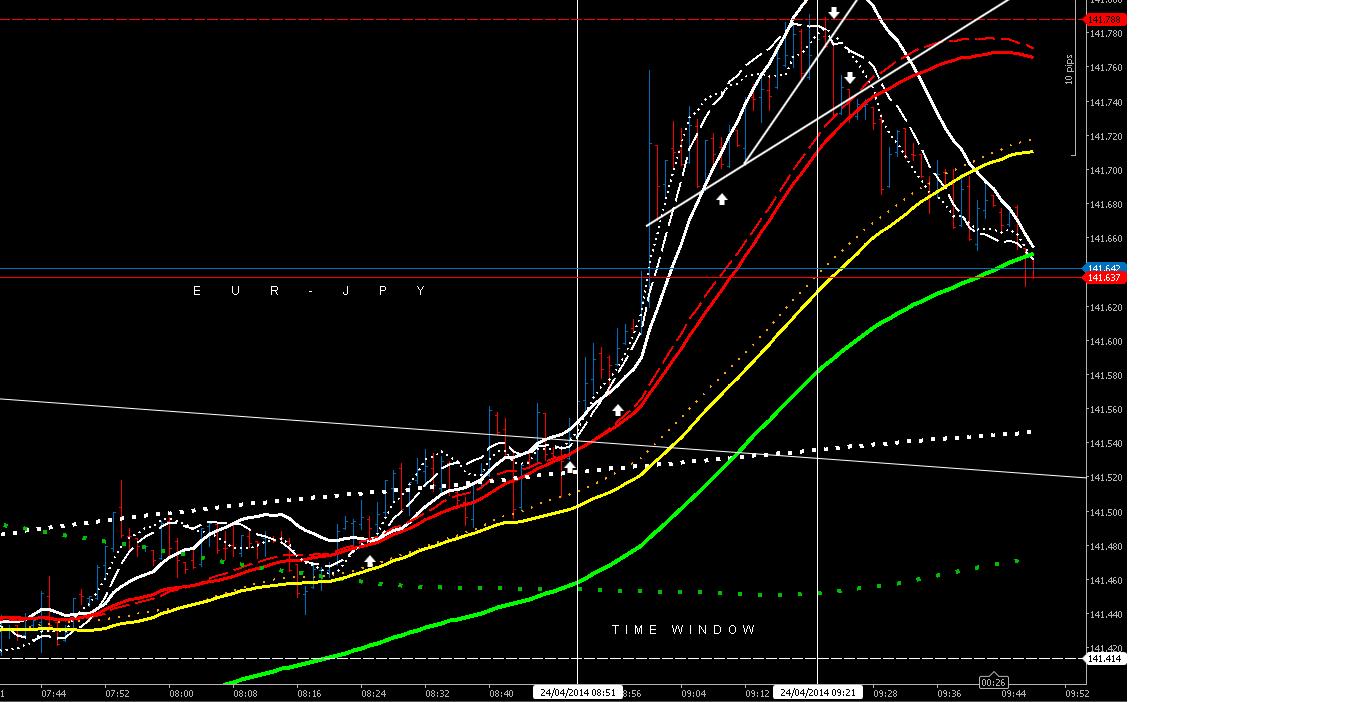Well heres an example of a live trade on the EJ taken in the last hour
I scalp sold the pair at 141- 79 - ie the interim high ( I actually got 141 786 as entry)
My stop would be 3 pips and I am using indicators to get the accuracy I need
Already - the trade in under 30 mins as a net RR of 4+
My leading indicators are -
1. Time frame changes in a half hr time window ( 9 mins either side)
2 LR indicators on a 1 min chart set at different setiings to show Price structure
3. Trendlines - 2 shown - and for me - are leading indicators
4 - Resistance - interim resistance band at 75 to say 85 with past R at 80
Along with a few other indicators - this gets me my scalp accuracy
To try and do this with a naked chart - is possible - with a bit of luck - but certainly far more difficult etc
I have not shown ray lines and angles of rise and fall etc - as did not want to confuse further etc - nor small frame oscillators such as a RSI on a super quick 2 setting
I will also find some past charts with my best leading indicator - ie the LR2
This indicator - works in advance of price movement and is therefore truely leading
Like anything techinical in forex trading - it can never be 100% accurate - trading is not a mathematical science and is not clean black or white - its full of grey and uncertainty
These reasons are just my own case for why I need indicators
I would also like to point out - all broker platforms are not that accurate
I would compare them with say a 1950's Ford Speedometer - ie showing 70 mph and doing a true 62 mph.
To get the most out of indicators - you have to mainly ignore the normal standard settings and bespoke them to your requirements - as well as play with them - as I have with Linear regression indicators on tick and 1 min charts to get rid of as much lag as possible - but still show structure in the present and in the near future
Please dont think I have anything against naked chartist - or 4 hr or daily chart traders. The latest "fashion" - I am seeing on some on other sites is traders uisng weekly charts for their entries;-)
Nothing against that - I use weekly / monthly and even quarterly charts to get the big picture view - and I am a scalper - but try to predict that far ahead to me is really pure guessing and so for me - high probability is vastly reduced.
I take on board Tim's points with regards to my terminology etc - and all comments i make are purely based on my own findings over last 11+ years - and are not necessary the views of other experienced traders
The question is though - are they making the retail profits I say are available - and if not - why not ??
Regards
F


